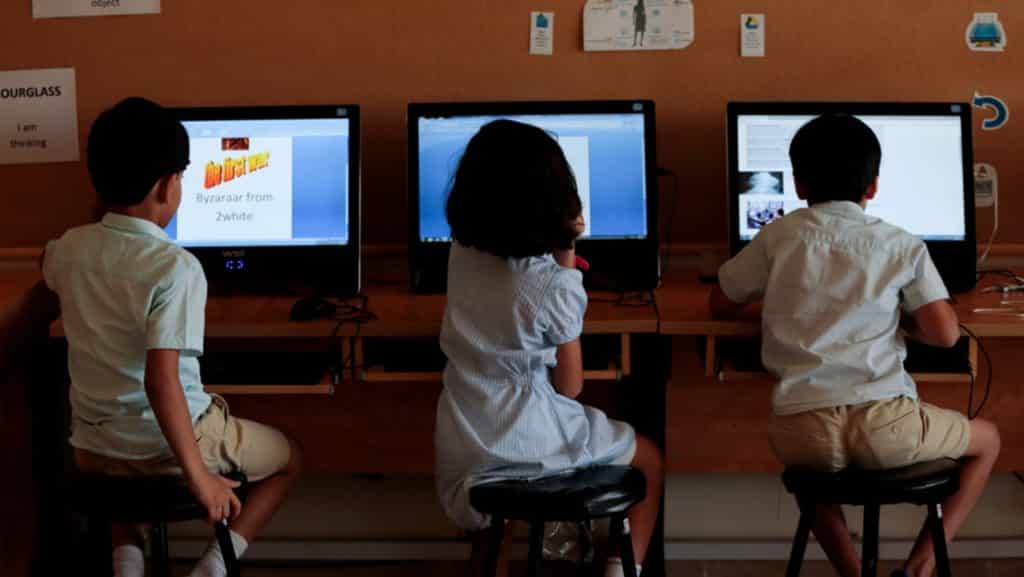|
Getting your Trinity Audio player ready...
|
As a huge number of understudies head back to class, families are most likely contemplating whether those gleaming new gadgets, applications, and even games that are turning into a normal piece of the school day are useful for learning. As schooling scientist zeroed in on mixed learning, I am frequently inquired as to whether training innovation “works.” The fundamental inquiry here for us all, myself notwithstanding: “Depends on the current proof, do I need my kid’s instructive experience to incorporated tech?”
The response to this inquiry is regularly some variety of “it depends.” You’ve likely heard that the examination base on ed tech is youthful, or that proof is blended, or maybe you’ve perused that inquiring as to whether it “works” isn’t the correct inquiry in the first place. I perceive how baffling and pointless these answers are to families and teachers, and I have been seeing a pattern that I believe is very steady and pertinent to those of us attempting to give viable learning encounters to all understudies.
For the most part, the proof base on ed tech underpins existing proof about face to face learning. All in all, training rehearses are the way to viable guidance and matter more than the presence or nonappearance of explicit instruments (e.g., reading material, writing boards, gadgets) in the learning climate. Accordingly, ed tech is viable to the degree that it can uphold educators in conveying, scaling, and supporting compelling instructing rehearses. This is obvious when you consider that the best encouraging practices are those which require the most nuanced and complex human mastery.
Conflicting discoveries recount a similar story:
I’d prefer to represent this pattern by bringing a profound plunge into an investigation of mixed learning, distributed in 2018, that closed mixed learning is more compelling than normal guidance in comparative evaluation levels and substance regions.
In the Tennessee Department of Education’s 2016-2017 Blended Learning Pilot Report, scientists researched whether an Algebra-centered pilot of mixed learning expanded understudy accomplishment (in addition to other things). This pilot activity was lined up with Tennessee’s essential objective to center “individualized freedoms and backing” on understudies who were farthest behind. Tennessee characterized mixed learning as, “… the blend of solid human showing techniques and innovation based instructing procedures intertwined to deliberately customize learning for understudies.” (p.1). This report centers around the 2016-2017 school year, the actual pilot proceeded through the spring of 2018.
The blended strategies study included 50, transcendently Algebra I, instructors and over 5.000 center and secondary school understudies from 37 schools in 21 regions. Analysts utilized understudies’ normalized scores on their End of Course Algebra evaluations as the result measure, and their 2014-2015 mathematical scores on a state normalized measure to control for any distinctions in number related accomplishment between understudies in the pilot and examination understudies.
From the outset, this seems to negate other late examinations, e.g.,
Backes and Hansen’s 2018 assessment of the Opportunity Culture mixed learning model, and Miron, Shank, and Davidson’s 2018 Virtual Schools Report that discovered mixed figuring out how to be less compelling than conventional guidance.
Is innovation positive or negative for learning?
Kids tune in to their educator on the main day of the new school year in a grade school in Nice, France, September 4, 2017. REUTERS/Eric Gaillard – RC14C74B21D0
Understanding the guarantee: How can schooling innovation improve learning for all?
How might these investigations be correct? All the more significantly, is there a solitary, noteworthy take away from them? The appropriate response lies in how the compelling system utilized ed tech to mix guidance. In Tennessee, ed tech was utilized in a “conscious, estimated” (p. 1) approach to expand understudies’ responsibility for learning, to separate guidance, and to permit instructors to zero in on the understudies that required the most help. From my viewpoint, these differed results show the significance of utilizing ed tech to help what we definitely know to be acceptable educating—on the grounds that there are conflicting discoveries about “mixed learning” as an aggregate system of instructional techniques, it is critical to ground execution in procedures that are proof based. The Tennessee examination researched mixing that was utilized to focus on known-successful practices and permitted instructors to invest more energy on giving more customized guidance to more understudies, along these lines bringing about sure effects.

